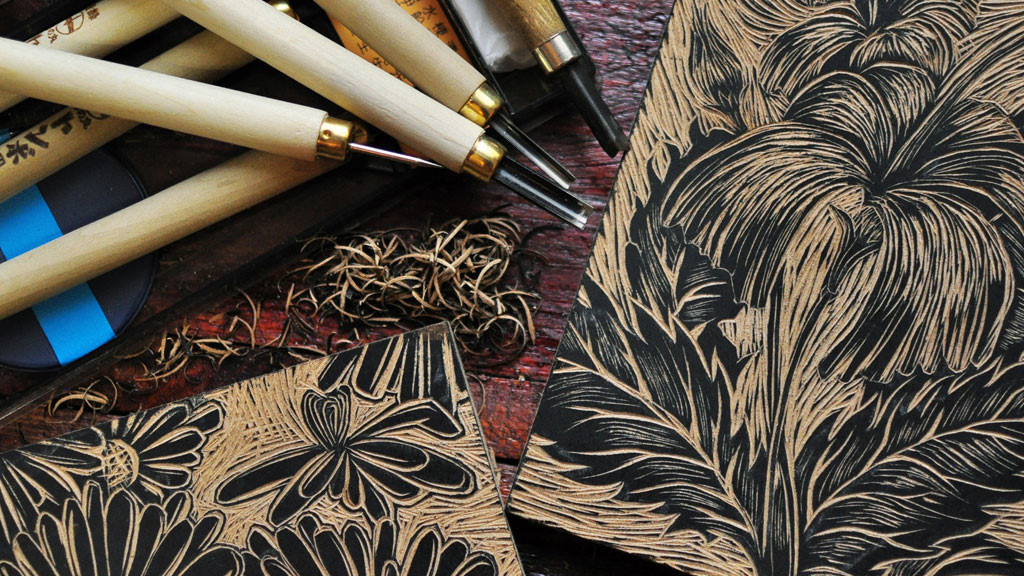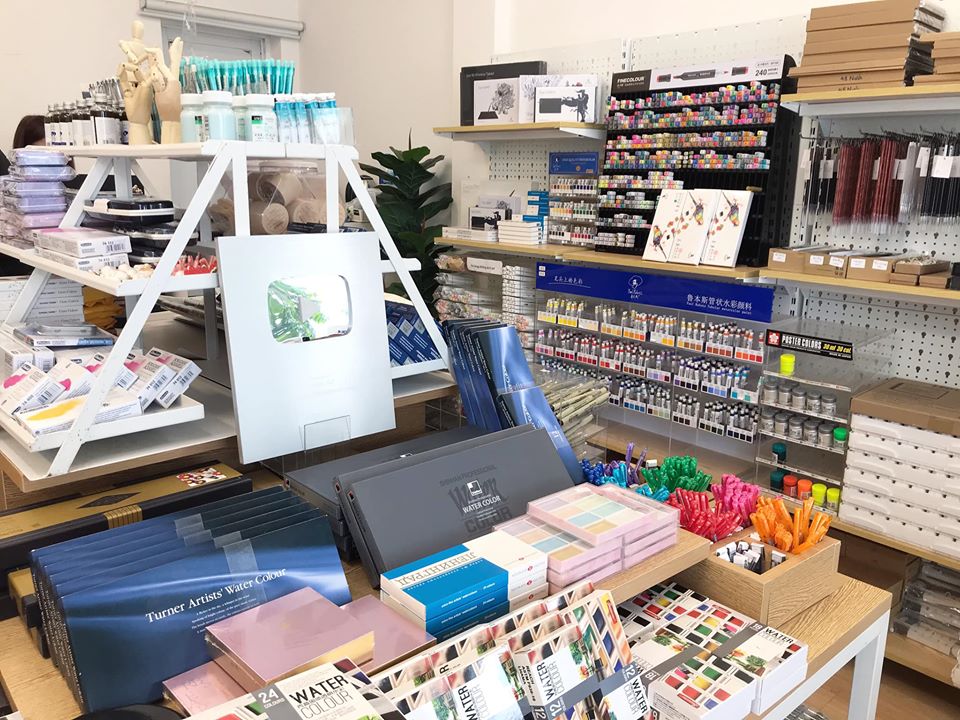Printing techniques in Vietnamese woodblock prints
Dong Ho woodblock prints in all colors and strokes (up to 5 copies must be printed because each color has 1 engraving so as not to mix colors together). This line of paintings prints face down: Insert the handle of the suitcase handle (called the trigger arm) on the back of the engraved board and then press it down on the cover (Consisting of a wooden frame wrapped in cloth, padded, dried banana leaves) that has been painted with color. After the engraved side has absorbed enough color, press the engraving board onto the printed paper like a seal and then turn the board with the paper on its side. Rub the loofah on the back of the paper so that the color is clearly printed on the paper. Finally, peel off the leaf and let it dry. For luck, the Dong Ho people always print in red first and the last stroke. Only 1 color can be printed at a time and the whole family can print in line until the finished product. In order to match the color plates and strokes, one aligns the gauge points with the toothpick mark at all prints so that there is no deviation. The message background of Dong Ho woodcut paintings is pure Vietnamese because Chinese folk paintings do not have this background.
(Wood carvings - unique prints)
Woodblock paintings of Hang Trong and Sinh Village only engrave and print 1 copy of each picture in black, when printing the plank upside down, apply ink and then spread the paper on top, then peel off the paper, hand-paint (prevent the color) with dyes (heat) Heat to keep the color stable and not fly). Mountain worship paintings are also printed in the same way, only the paint color is different when using colors taken from nature.
Kim Hoang woodcuts also only have 1 black engraving, so it should be printed twice: the first time to get a hold of color with a pen, create random patches of color, and then reprint the stroke for clarity. go up. The background of Kim Hoang paintings is always painted in red, so it is called the Red line of paintings.









